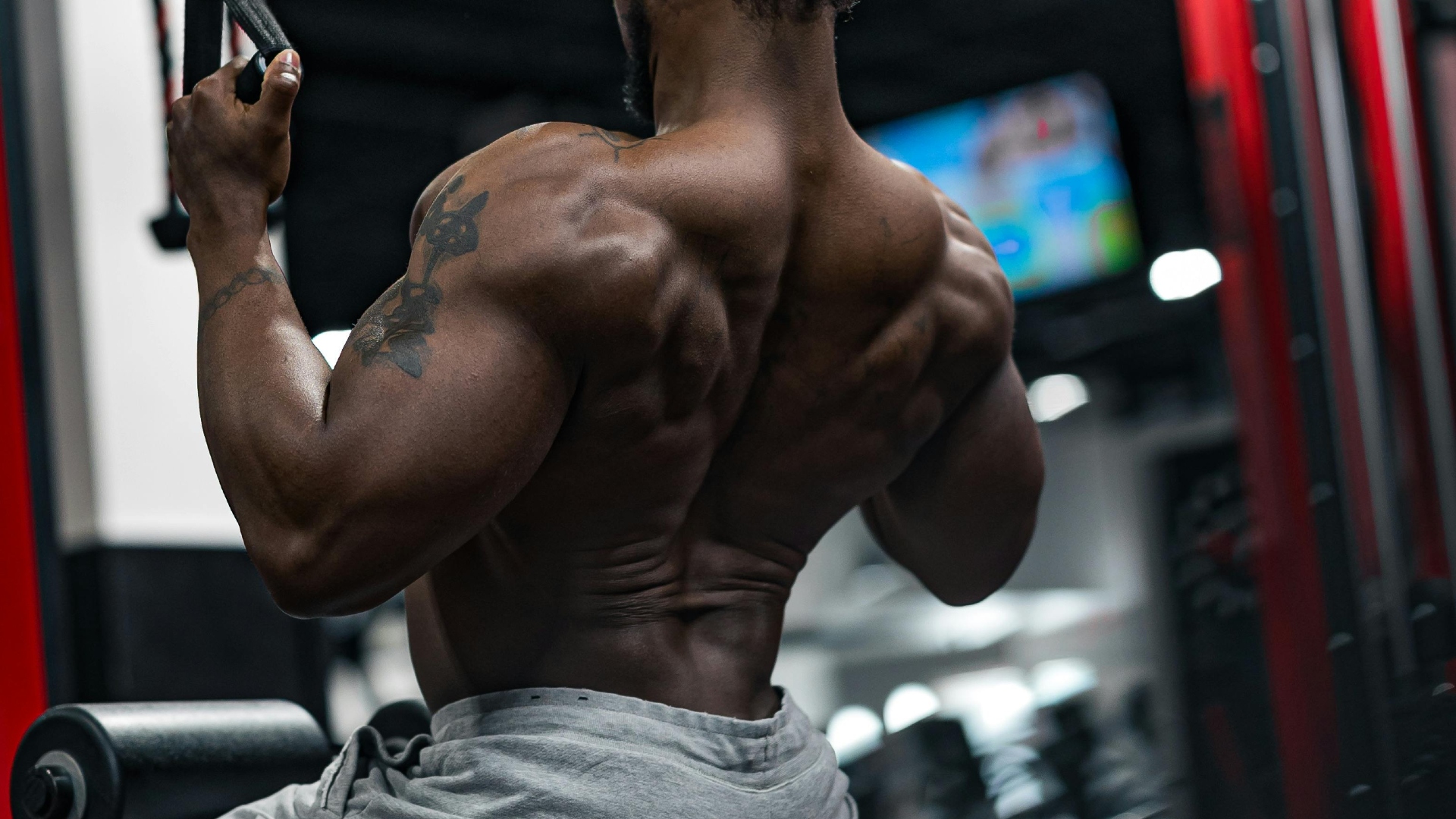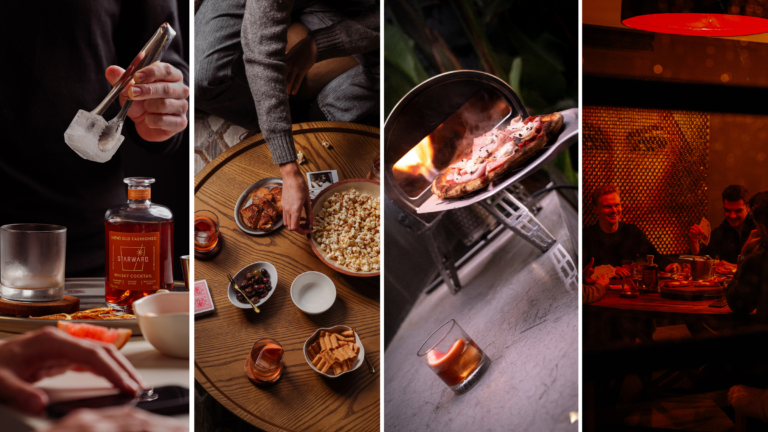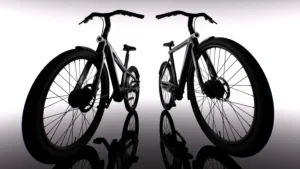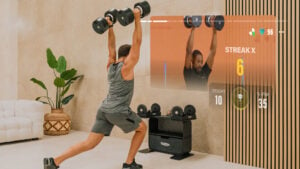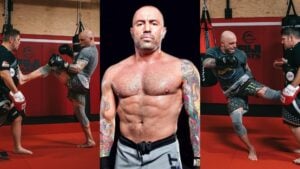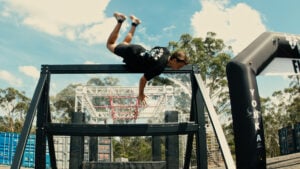Trap muscles are responsible for stabilizing your head, shoulders, and spine; making them great muscles to strengthen to avoid serious injuries (1). This article has 13 of the best trap exercises designed to bulk up those muscles and help you get stronger.
You need a good foundation on your trap muscles to do a lot of other workouts, such as deadlifts, rowing, and overhead pressing. Without solid trap muscles, you risk serious injury (2).
If you don’t have steady access to a gym, don’t worry. You can do some of the best trap exercises for men with water jugs and soup cans.
Jump To:
What Are the Different Trap Muscles?
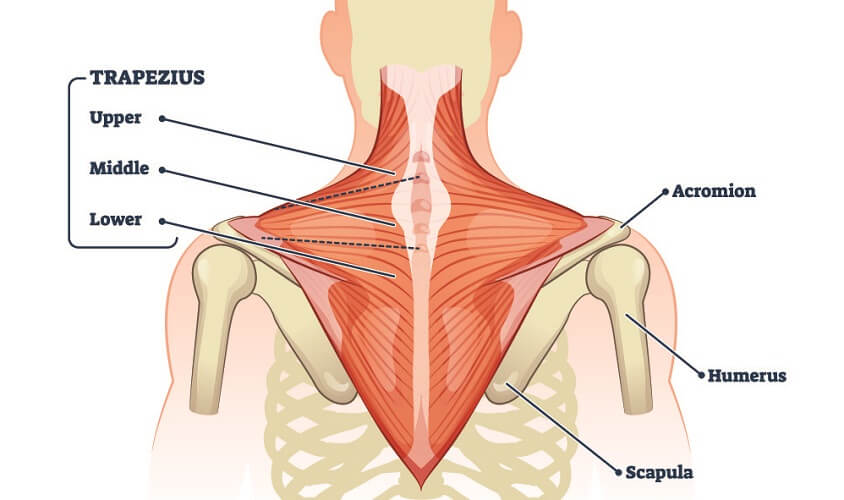
The trapezius muscle (3), also known as the trap muscle, is a large and superficial back muscle located just behind your neck and across your shoulders. It attaches to the spine, shoulder blades, ribs, and collarbone.
The traps consist of three different muscle fibre groups: the upper traps, middle traps, and lower traps. When appropriately trained with the best trap exercises, these muscles can help protect your neck and spine from injury (4).
Upper Traps
The upper trapezius is the smallest section of the muscle group and stretches from the base of your neck across your upper shoulders. These muscles help you lift your arms up and down, tilt your head and neck, and shrug your shoulders.
Middle Traps
The middle traps are set across your shoulders and help you pull your shoulders back, place your arms behind you, and stabilize your shoulders when you move your arms.
Lower Traps
The lowest trap muscles start at your shoulder blades and end down your back in a “V” shape. Lower trapezius muscles let you lower your shoulders from your ears and help to protect your spine when twisting and bending.
Why It’s Important To Workout Your Traps
Your traps are one of the most important muscle groups, both when it comes to having good posture and reducing the risk of back injuries in the gym. Especially for those of us who spend our days sitting in front of a computer, strong and healthy traps will help you correct a hunched back and make tight shoulders feel better.
In addition to the posture benefits that training your traps will bring, they are also involved in hundreds of different daily movements, from nodding and turning your head, to lifting objects. Training your traps will improve the overall strength of your back and shoulders, which will also assist with dozens of different exercises in the gym, from barbell lifts and seated rows, to chin-ups and any other pulling movements.
How To Get Stronger Traps
While training your traps, a great piece of advice to follow is to perform movements while standing up. Not only will they assist with your overall stability and balance, but they’ll also strengthen the muscle groups around the traps, ensuring your different muscles are working together effectively.
The 13 Best Trap Exercises & Workouts For Men
These exercises feature various movements, muscle groups, weight recommendations, and set and rep numbers. Not all require professional workout equipment from a 5-star gym, while most give beginners a great place to start on their trap journeys.
1. Shrugs
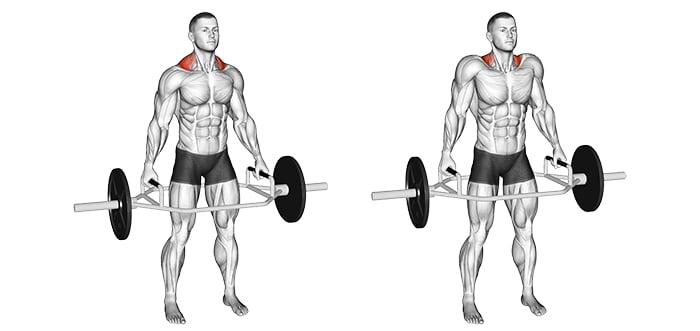
- Difficulty: Beginner
- Target muscles: Trapezius
- Equipment needed: Hex bar
- Sets: 2-3
- Reps: 3-5
- Rest: 60 seconds
Benefits: You’ll hear a lot about shrug workouts when focusing on your traps. There are many great options for shrugs that cater to the different parts of the trapezius. They’re one of the best lunch break exercises, and you can do them anywhere.
- They work the traps through a full range of motion
- Strong upper traps lead to solid head support and good posture
- They’re easy to do, and you can do them almost anywhere
Cable Shrug
Cable shrugs target the traps, rear delts, and upper back. Because the cable has constant tension, you can fully utilize your traps throughout the range of motion. It almost feels like you’re working against gravity when you’re not:
- Stand in front of the cable machine and grab the rope attachment with both hands.
- Keep your feet shoulder-width apart, your shoulders down, chest up, and hold the rope with arms extended.
- Without using your arms, bring your shoulders towards your ears and then pull back slightly.
- Pause for a few seconds before returning to the starting position.
Trap Bar Shrug / Barbell Shrug
This type of shrug targets the upper trap muscles, helping you build better definition in your shoulders.
- Lift the barbell or trap bar using an overhand grip with your hands more than shoulder-width apart.
- Let the bar hang at arm’s length in front of your waist.
- Slightly arch your back and lean forward 10 degrees at your hips.
- Bend your knees for stability and keep your arms straight as you shrug your shoulders upward.
- Hold the shrug for around 5 seconds before returning to the starting position.
- This is one rep.
Dumbbell Shrug
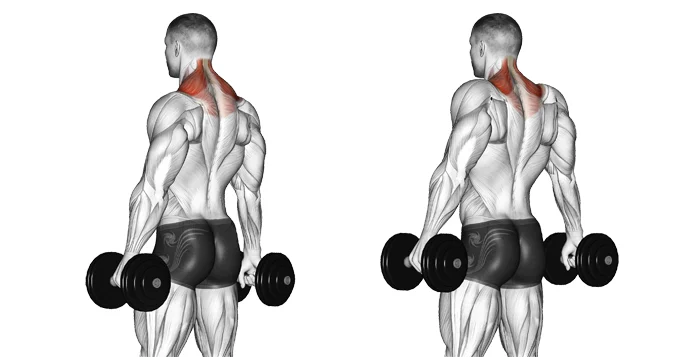
- Difficulty: Beginner
- Target muscles: Trapezius
- Equipment needed: Dumbbells
- Sets: 2-3
- Reps: 8-10
- Rest: 60 seconds
Benefits: Dumbbell shrugs function the same way as barbell shrugs, except your shoulders rest at a different angle. Dumbbell shrugs are easier for beginners and are less intensive but improve shoulder mobility and strength. These shrugs focus on your upper traps.
- Hold a dumbbell (or milk jug, etc.) in either hand.
- Rest your arms on either side of your body with your palms facing each other.
- Shrug your shoulders up as high as you can and pause in the tense position.
- Slowly return to the original position.
- This is one rep.
Pullup Shrug
This type of shrug requires you to have a pullup bar or a ledge you can safely grab onto.
- Hang from the bar with your core tight and spine straight.
- Lift yourself using your shoulders in the shrugging motion so your head moves upwards and your shoulders pull back.
- Tighten your core and abs, hold for around 5 seconds and then release your shoulders slowly.
- This is one rep.
2. Rack Pulls
- Difficulty: Beginner
- Target muscles: Traps
- Equipment needed: Barbell
- Sets: 4-6 heavy, then 1 lighter
- Reps: 3-5 reps with a heavy load, then 1 set of 10 reps
- Rest: 3-5 minutes between heavy sets, 60 seconds after the lighter
Benefits: The weight starts slightly above the ground to make it easier on your back, and the height allows you to focus on your shoulders and less on your core.
Rack pulls are one of the best trap exercises and upper-body workouts that help build strength and posture. You’ll train your entire back and core with this exercise. It’s similar to a deadlift, except you’re starting just above the ground at shin level. This height difference allows you to focus on your shoulders and back and less on your core. Rack pulls bring your attention to keeping a good posture and your back stable.
- Place the rack just above the shin level.
- Using an overhand grip, grasp the bar, and keep your hands shoulder-width apart.
- Bend at the waist, push your hips back and your feet onto the floor, and pull the bar upward while keeping your back straight.
- Hold for a count (around 5-7 seconds) before carefully returning to the starting position.
- This is one rep.
3. Face Pulls
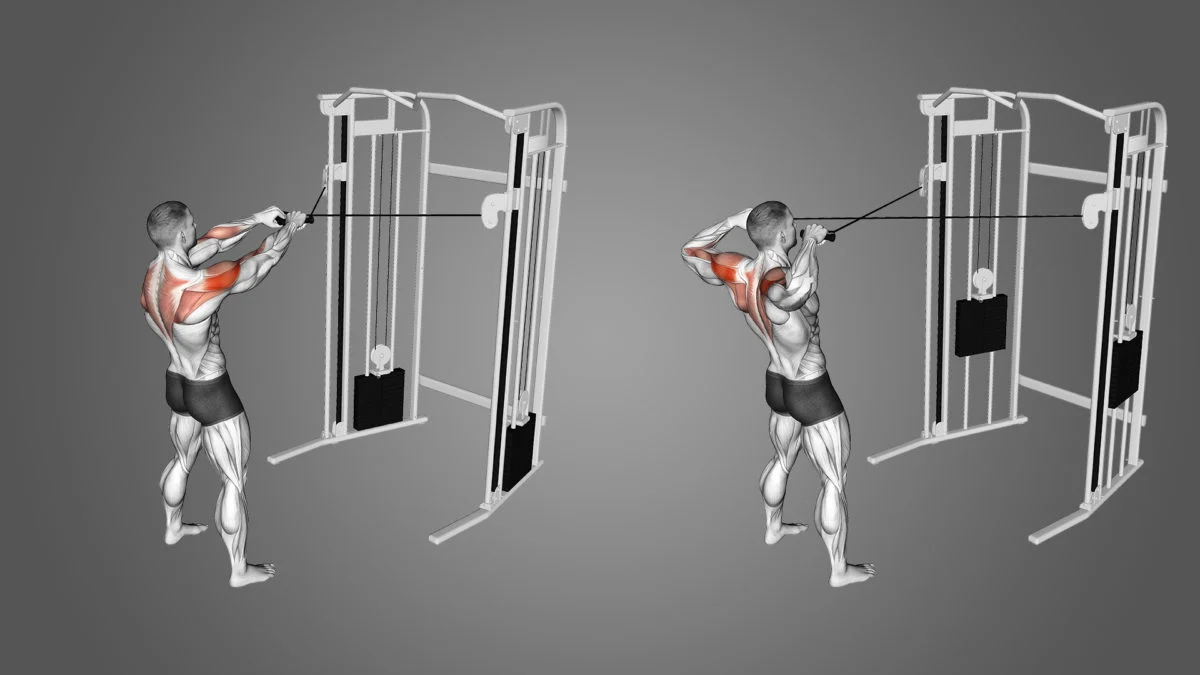
- Difficulty: Beginner
- Target muscles: Trapezius
- Equipment needed: Cable machine
- Sets: 2-3
- Reps: 8-12
- Rest: 60 seconds
Benefits: You can do this exercise standing up with a straight back as well as at home with a resistance band.
You traditionally do face pulls with a machine designed to increase the resistance against what you’re pulling on. You can perform this exercise with a resistance band. Face pulls focus on the lower traps.
- Set the cable or band at eye level.
- Using an overhand grip, grab the rope or band in each hand.
- Pull the cable toward your face while keeping your elbows high and your back straight.
- Take the cable or band as close to your face as you can and then hold for 5 to 10 seconds before carefully and slowly returning to the starting position.
- This is one rep.
4. Farmer’s Walk
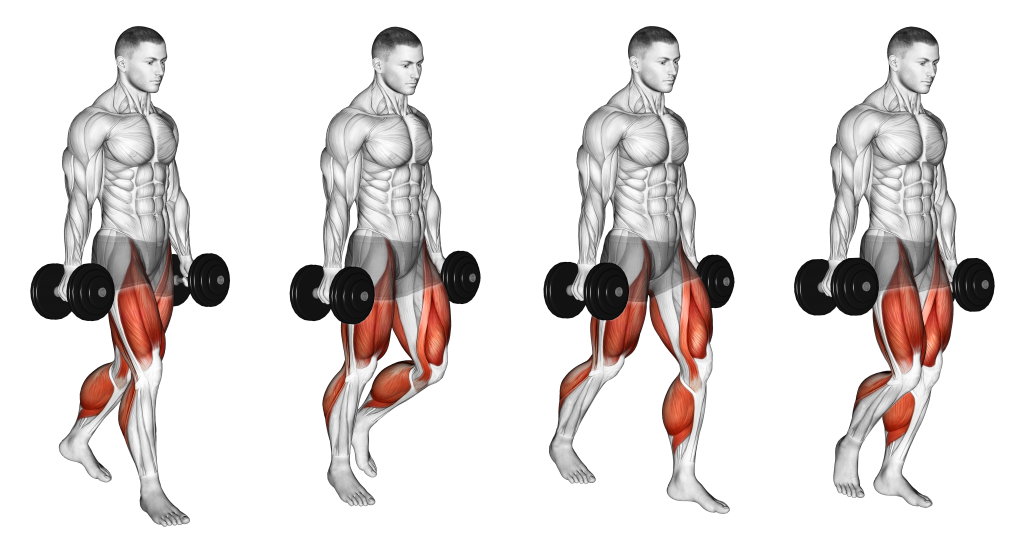
- Difficulty: Beginner
- Target muscles: Trapezius, quads, glutes, calves
- Equipment needed: Dumbells
- Sets: 2-3
- Reps: 1 (walking a specified distance)
- Rest: 60 seconds
Benefits: You can do it anywhere as long as you have access to weights that heavy, it challenges and improves grip strength, core strength, and posture.
The farmer’s walk (or farmer’s carry) is one of the most popular and best trap exercises because of its simplicity. It’s one of the best forearm exercises because it challenges your shoulders and grip strength.
You’ll need two dumbbells that equal your body weight or more when combined. The distance you walk is up to you and your comfort level, but I recommend going 40 to 60 meters using a lighter weight (your body weight) and 20 to 30 meters using a higher weight. The weight must be the same on both sides to ensure your back appears symmetrical.
- Hold a weight of your choosing (dumbbell, kettlebell, milk jugs) in each hand on either side of your body.
- You need to keep an upright posture while engaging your back and core.
- Finally, you’ll take stable, slow steps while maintaining your perfect posture.
5. Dumbbell Rows
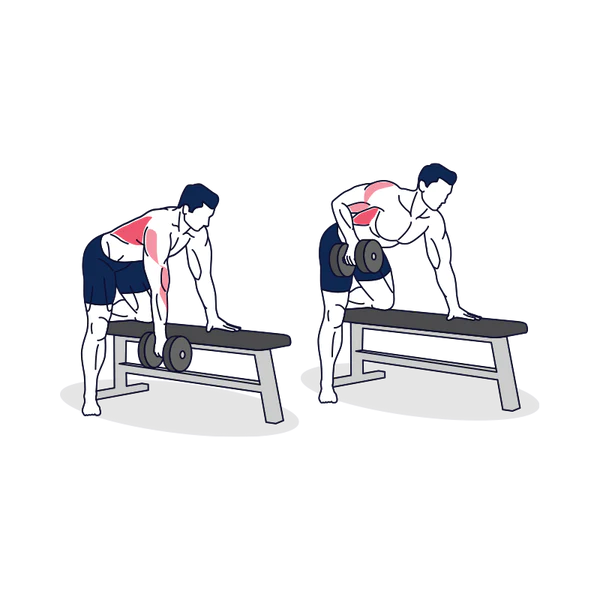
- Difficulty: Beginner
- Target muscles: Trapezius, rear delts, lats, biceps, triceps
- Equipment needed: Dumbbells
- Sets: 3-5
- Reps: 8-12
- Rest: 60 seconds
Benefits: It engages your core and obliques, as well as your shoulders, and traps.
Dumbbell rows go by a lot of names. The dumbbell one-arm row and the single-arm dumbbell upright row are the same, just with your body in different positions. Dumbbell rows are great for working out your middle and lower traps. The idea behind step four is to give your traps the rest they need while you’re still working out the other side. You won’t be standing around for 60 seconds doing nothing. However, you can forgo step four and do both arms simultaneously, like a rowing machine.
- Grab your dumbbell (or any freestanding weight) in one hand. Use the overhand grip and keep it in front of your body.
- Pull your elbows and shoulders back and to the side while bringing the weight toward your chin.
- Return to the starting position.
- That’s one rep.
- Perform all reps with one arm before switching to the other arm.
6. Dumbbell Prone Y-Raises
- Difficulty: Beginner
- Target muscles: Trapezius
- Equipment needed: Dumbbells, incline bench
- Sets: 2-3
- Reps: 5-7
- Rest: 60 seconds
Benefits: Strengthens your lower traps to improve performance and posture, as well as training the lateral parts of your shoulder.
Prone y-raises strengthen the lower traps, aiding in spine strength and back stability. It’s a great exercise to help you achieve better posture, and trainers recommend it for those struggling with back pain. They’re also one of the best triceps exercises for men involving trap muscles:
- Set an adjustable bench to a 45-degree angle and lie down.
- Slowly raise a pair of dumbbells out in front of you — you should look like Superman flying through the sky.
- Lower the dumbbells to the starting position at your sides.
- This is one rep.
- If you want to make the exercise more challenging, have the bench at a steeper incline.
7. Overhead Squats
- Difficulty: Intermediate
- Target muscles: Trapezius, quads, glutes, core
- Equipment needed: Barbell
- Sets: 2-3
- Reps: 4-6
- Rest: 60 seconds
Benefits: They work out the entire body and are excellent for when you’re short on time, and can be done without weights as long as you activate your muscles when you reach upwards.
You can use dumbbells or barbells when doing the best trap exercises. While squats are generally seen as a typical lower body workout, adding upward motion above your head is an excellent way to engage your back and shoulders for total body exertion:
- Stand with your feet shoulder-width apart and hold two dumbbells in each hand above your head with arms straight (never locked).
- As you squat down, lower the dumbbells to your chest.
- Slowly push back up and return to the starting position.
- This is one rep.
8. Overhead Plate Raise
- Difficulty: Beginner
- Target muscles: Trapezius, front delts
- Equipment needed: Weight plate
- Sets: 2-3
- Reps: 6-8
- Rest: 60 seconds
Benefits: They’re a great warmup to activate your back and shoulders, and can be done with tyres or discs and don’t need to be professional workout equipment.
Overhead plate raises are a great way to work out the lower traps and obliques because you’re shifting your centre of gravity by raising so much weight above your head. Your shoulders work while you lift the plate and your pecs help to lower the plate in a controlled manner.
- Your starting position is standing straight with a plate in both hands. Your hands will be down in front of you with your thumbs pointing up.
- Raise the plate as high over your head as you can while squeezing the mid-back between your shoulders.
- Keep the tension in your shoulders as you lower the plate down to the starting position.
- This is one rep.
9. Scaption
- Difficulty: Beginner
- Target muscles: Trapezius, front delts
- Equipment needed: None
- Sets: 3-5
- Reps: 10-20
- Rest: 60 seconds
Benefits: Great combo exercise for beginners when you’re short on time and can do it with varying weights as either a warmup or as the main exercise.
Scaption exercises are great for the core and shoulders but also help strengthen or tone your upper and middle traps. They’re a great combination exercise if you’re short on time but still want a complete upper-body workout. It’s very similar to barbell lateral raises:
- Start with your feet shoulder-width apart with a dumbbell in each hand.
- Keep your elbows bent as you raise your arms about 30 degrees in front of you, almost like you’re about to hug someone.
- Bring the dumbbells to shoulder level (don’t raise them above your shoulders!), hold the position, and then repeat.
- This is one rep.
10. Dumbbell Prone Press
- Difficulty: Beginner
- Target muscles: Traps, lats, delts
- Equipment needed: Dumbbells, bench
- Sets: 2-3
- Reps: 4-6
- Rest: 60 seconds
Benefits: It’s difficult, which means it’s an excellent move for those used to working out and can be done with light weights, meaning you can do it anywhere without special equipment.
Dumbbell-prone presses are much like the Y-raises, except you’re lying on the ground or on a horizontal bench. They work the same muscles as the y-raises and focus on the lower back and obliques:
- Start by lying horizontally on your front with a dumbbell in each hand.
- Your elbows will be tucked back behind your shoulders in the starting position.
- Push the dumbbells out past your head without letting them touch the ground in front of you.
- Hold that position for a set time, and then slowly pull your arms back to the starting position.
- This is one rep.
11. Barbell Rows
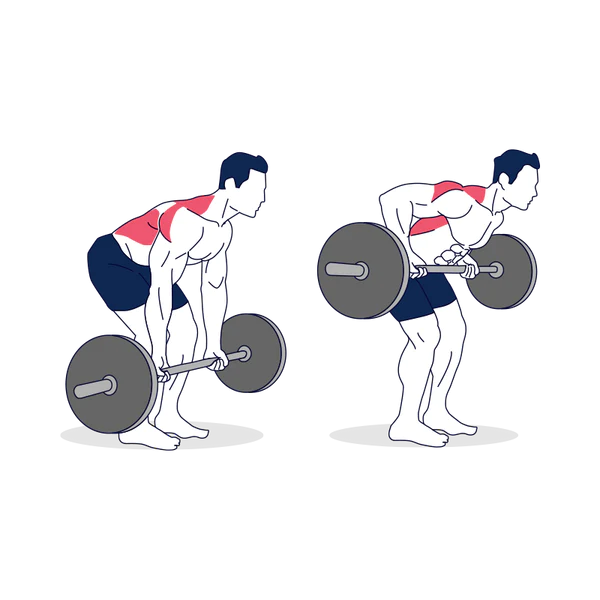
- Difficulty: Intermediate
- Target muscles: Trapezius, lats, rear delts
- Equipment needed: Barbell
- Sets: 2-4
- Reps: 3-5
- Rest: 60 seconds
Benefits: They’re versatile exercises that strengthen your entire upper body while encouraging stability. It’s also one of the best workouts to help you lose weight fast around your face thanks to their intense sets.
Barbell rows train your middle and lower traps, while supporting your rhomboids and core muscles. They’re similar to dumbbell rows, except here, you have one bar to hold instead of individuals in front of you, and you’re bent over at an angle:
- Grab the barbell a little wider than shoulder width using an overhand grip. You’ll be bent over at an angle, and the barbell is still on the ground.
- Hold the barbell at arm’s length.
- Bend your knees until your torso is nearly parallel to the floor while ensuring your back is arched.
- Pull the bar toward yourself and squeeze your shoulders, holding the position at the top for a few seconds. The barbell should touch your abdomen between your navel and your chest.
- Slowly release the barbell back to the floor and return to the starting position.
- This is one rep.
You can also use a trap bar and perform Upright Rows, similar to barbell rows. The bar never rests on the ground and is held before you. You do this exercise standing straight up, making it easier for people with bad backs:
- Take a trap bar in an overhand grip and rest it in front of you against your thighs.
- In one motion, lift the bar until your elbows are even with your ears.
- Then, slowly lower the bar back down to the starting position.
- This is one rep.
12. Dumbbell Lateral Raise
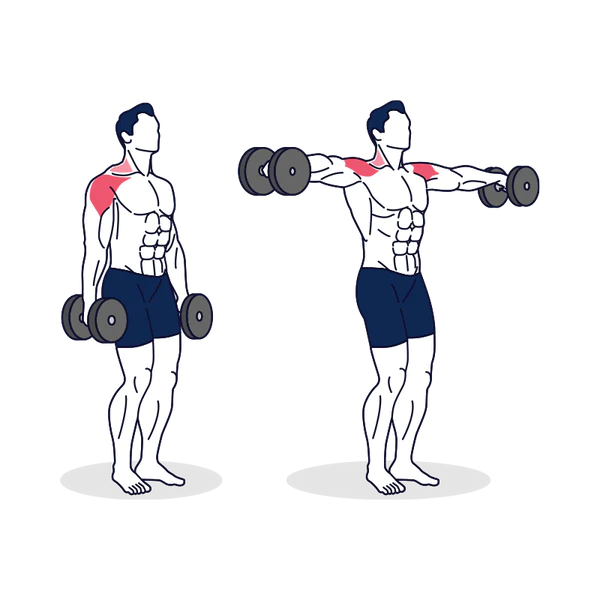
- Difficulty: Beginner
- Target muscles: Traps, lateral delts
- Equipment needed: Dumbbells
- Sets: 3-5
- Reps: 10-20
- Rest: 60 seconds
Benefits: It builds up the sides of your upper body, making you appear bigger, and is easy to perform with or without technical weights. Also very versatile and can be done using cables, dumbbells, kettlebells, or at-home items like milk jugs or water bottles.
Most gym goers know dumbbell lateral raises from deltoid workouts, but did you know the exercise also strengthens your upper traps? They’re one of the best shoulder exercises and have more than one benefit:
- Hold a dumbbell or weight in each hand and keep your arms to your sides.
- Stand straight with your shoulders shoulder-width apart.
- Ensure your elbows aren’t locked while you bring your arms out and up to shoulder level — you’ll look like the letter T.
- Hold for a few seconds and then slowly return to the starting position.
If dumbbell lateral raises were already part of your shoulder and chest workout, you could make them more challenging by stopping above your starting position. For example, if you start with the dumbbells resting against the sides of your thighs, try to keep your arms engaged the entire time instead of lowering them completely.
13. Deadlifts
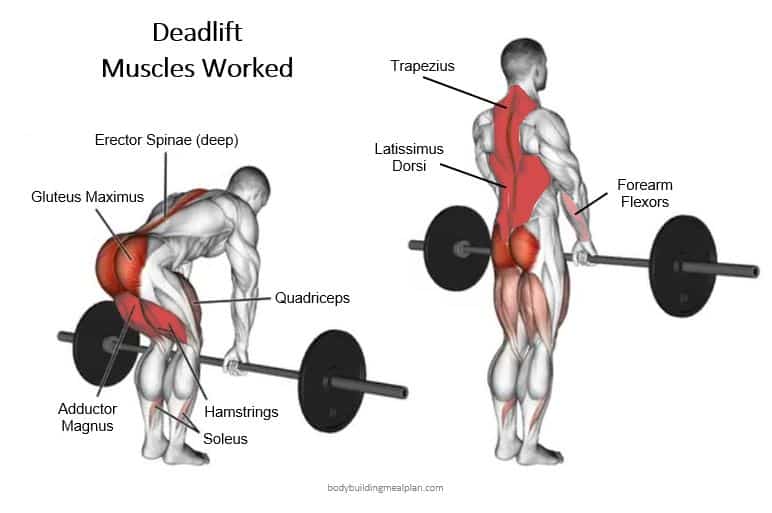
- Difficulty: Intermediate
- Target muscles: Traps, lats, glutes, quads, hamstrings and core
- Equipment needed: Barbell
- Sets: 3-5
- Reps: 4-6
- Rest: 60 seconds
Benefits: Good technique is critical to avoid injury, meaning you should never curve or hump your spine when trying to lift a deadlift! Your back must stay straight, and your shoulders must drop. You’re not raising the bar with your arms — you’re lifting it with your entire body.
The deadlift is one of the best compound exercises (and best trap exercises) because it requires many muscle groups to work together. Deadlifts are like having the best exercise bike available because, like biking, deadlifting requires almost every muscle in your body to keep you safe and stable.
- Stand with the middle of your food under the barbell.
- Bend at the waist and grab the bar with an overhanded shoulder-width grip.
- Bend your knees until your shins touch the bar.
- Lift your chest and straighten your lower back.
- Take a deep breath, hold it, and stand up with the weight.
- You can either place the bar back down or drop it.
- This is one rep.
Final Thoughts
Working out your traps is for more than just looking good. Your upper, middle, and lower traps are vital in protecting your neck, shoulder blades, and spine. These exercises will help you build muscle while improving your posture and day-to-day strength. Alternating these exercises in and out of your gym rotation is a great way to ensure you never get bored of dumbbells.

Citations
- Anatomy, Back, Trapezius, StatPearls – National Library of Medicine, 25 July 2022.
- Shoulder Muscle Imbalance And Subacromial Impingement Syndrome In Overhead Athletes, International Journal of Sports Physical Therapy, March 2011.
- Trapezius, Physiopedia.
- Strength Training For Back Pain, Keiser Australia.
The Boss Hunting Fitness Reviewer — Jono Castano, Certificate IV in Fitness, Precision Nutrition Level 1
Jono Castano is a Sydney-based celebrity personal trainer and certified nutrition coach who specialises in fitness, training, workouts and diet plans. He is the co-founder of the popular Acero fitness brand and fitness app and has become well-known for his extensive work with noted figures like Rebel Wilson, Jessica Mauboy, Lincoln Lewis, Joel Creasy, and The Veronicas.
Jono has built a large social media following with over 800,000 subscribers on Instagram. He has also been profiled by publications such as Men’s Health and has become one of the most recognisable fitness instructors in Australia.
- Location: Sydney, Australia
- Credentials: Certificate IV in Fitness, Precision Nutrition Level 1
- Expertise: Fitness, Training, Personal Training, Workouts, Diet Plan
Editor’s Note: The fitness content on Boss Hunting is informative in nature, but it should not be taken as medical or professional fitness advice. When starting a new training regimen and/or diet, consulting with a trusted medical professional or trainer is always a good idea.
Did you enjoy this article on the best shoulder exercises? Check out a few of Boss Hunting’s other workout guides below:
- The 15 Best Exercises For The Perfect Leg Workout
- The 12 Best Shoulder Exercises For Improved Strength & Size
- The 15 Best Exercises For The Perfect Leg Workout
- The 16 Best Chest Exercises & Workouts For Men
- How To Bench Press [A 101 Guide For The Average Bloke]
- The 21 Best Rear Delt Exercises For Boulder Shoulders
- The 11 Best Tricep Exercises For Improved Strength & Size
- The 15 Best Bicep Exercises & Workouts For Men
- The 15 Best Ab Workouts & Exercises For Summer
- The 9 Best Lat Exercises For Improved Strength & Size
- The 16 Best Oblique Exercises & Workouts For Men
- The 10 Best Forearm Exercises & Workouts For Men
- 5 First Time Marathon Tips From Olympic Runner Brett Robinson
- The 25 Best Dumbbell Exercises & Workouts You Don’t Need A Gym For
- Why The 75 Hard Challenge Can Work For You
For more information to consider about diet, nutrition and, fitness equipment, check out below:
- Does Intermittent Fasting Actually Work? We Tested It Out
- How To Lose Weight Fast: 10 Simple Tips To Shed Fat More Efficiently
- The 7 Best Massage Guns You Can Buy In Australia
- The 13 Best Exercise Bikes To Stay Fit This Winter
- The 22 Best Mountain Bikes Money Can Buy Right Now
- The 16 Best Electric Bikes In Australia
- 8 Best Tennis Shoes for Men in Australia
For some celebrity inspiration, check out our celebrity workout guides right here:
- Henry Cavill’s Workout Routine Will Unleash Your Inner Superman
- The Workout That’ll Get You ‘Gladiator 2’ Ripped Like Paul Mescal
- The Chris Hemsworth Workout & Diet Plan Is Inhuman
- Jake Gyllenhaal’s Workout & Diet Plan To Get ‘Road House’ Ripped
- How Jeremy Allen White Got Calvin Klein Model-Jacked
- Joe Rogan’s Workout & Diet Plan Isn’t For The Faint-Hearted
- How Hugh Jackman Trained For His MCU Return In ‘Deadpool & Wolverine’
- Daniel Craig’s Military-Inspired Workout For ‘No Time To Die’
- How Michael Jordan’s Personal Trainer Helped Him Achieve GOAT Status
- The Bruce Lee Workout That Made His Rig Famous
- The Rock’s Intense Workout For ‘Hobbs & Shaw’ Will Bring You To Your Knees
For the best places to improve your health and fitness, check out our recommendations here:
